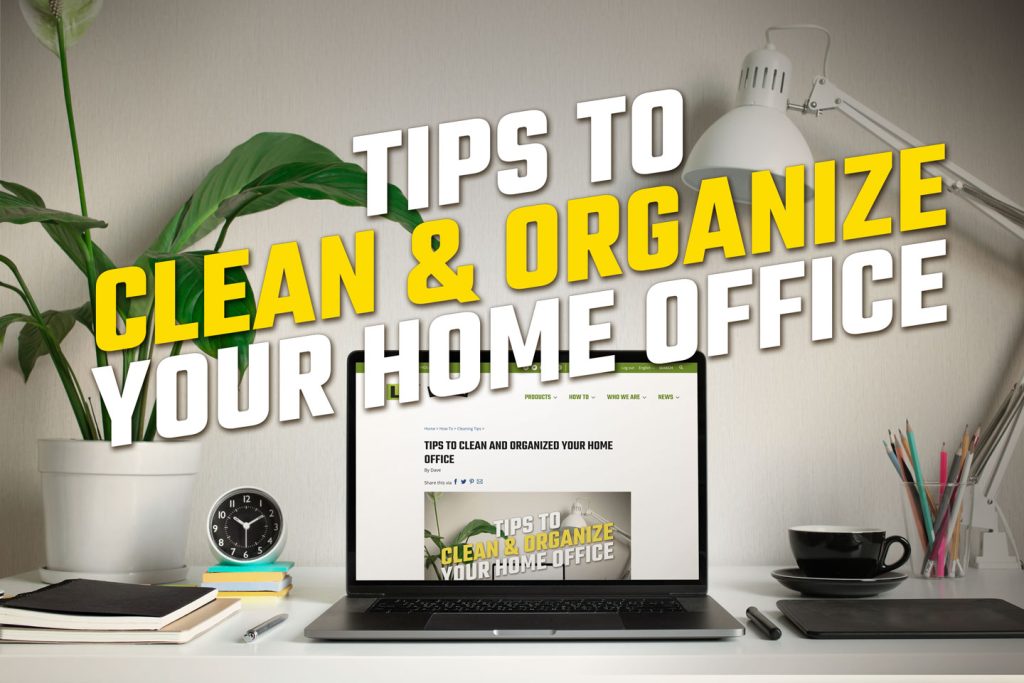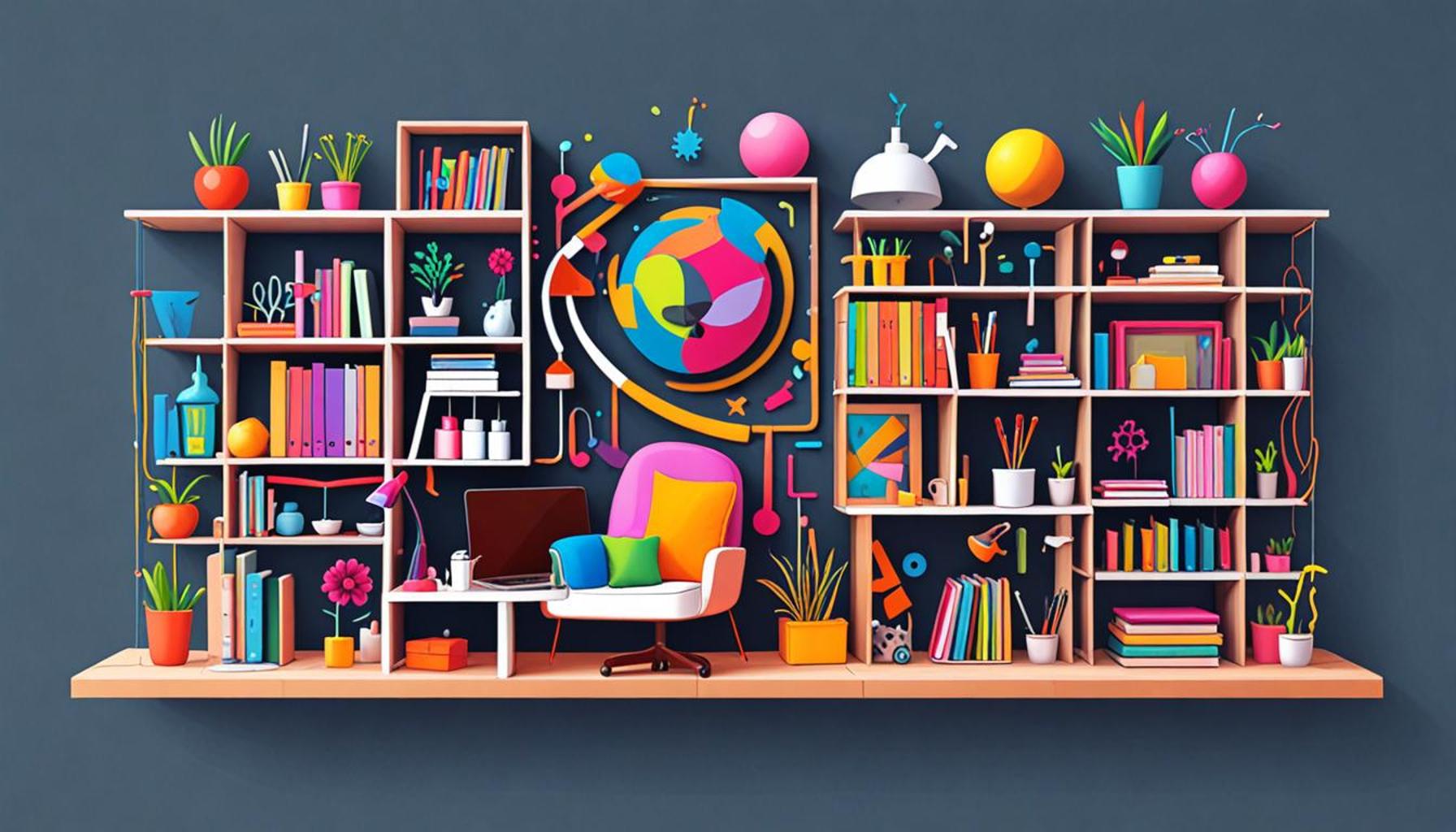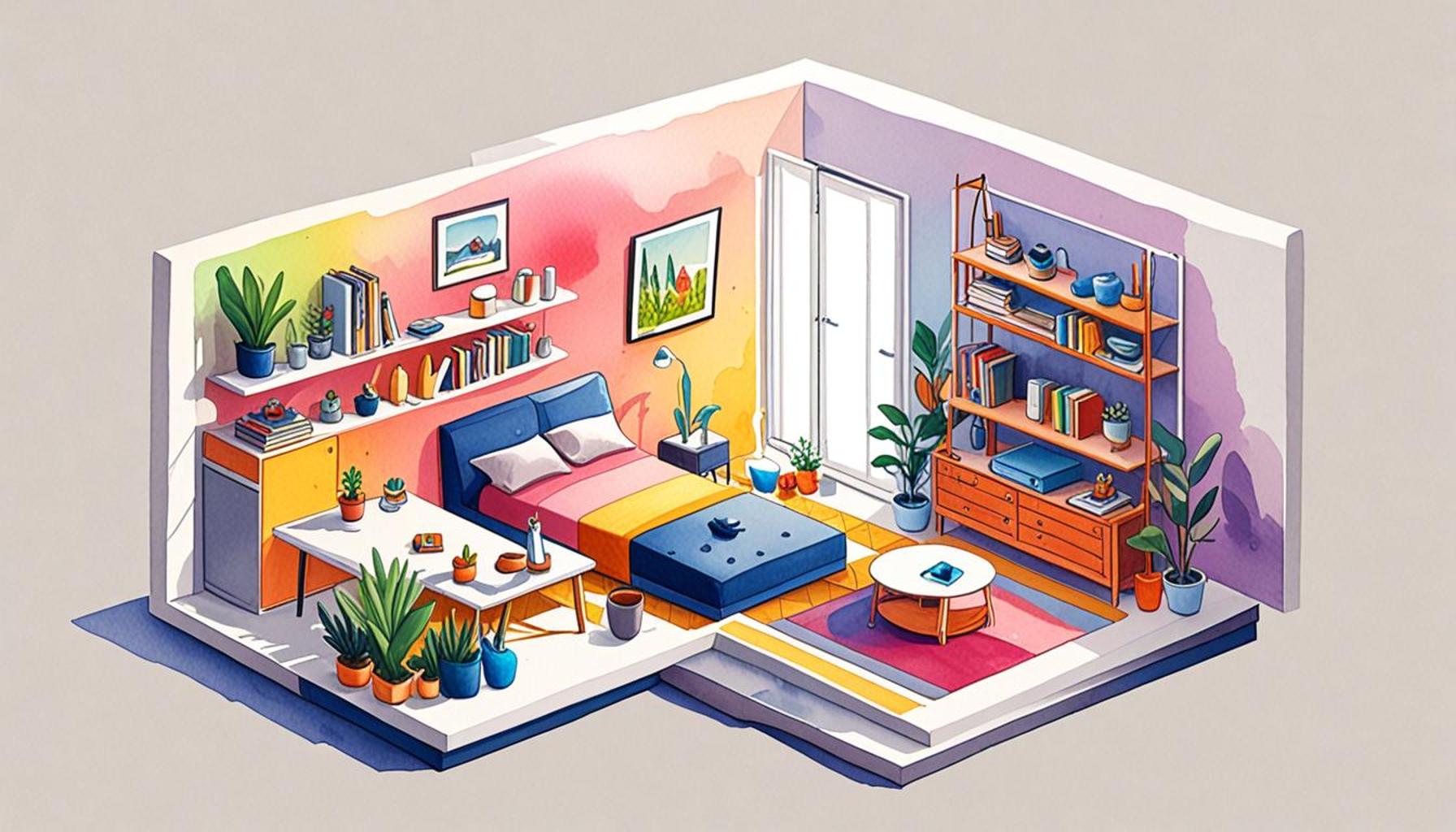Personal Organization Tips to Maximize Home Workspaces

Unlocking Your Home’s Potential
The landscape of work has shifted dramatically, with many individuals embracing remote work as the new norm. This shift has led to the necessity of transforming our living spaces into multifunctional home offices. By applying the right personal organization tips, you can optimize your workspace for both productivity and creativity. A well-organized home office setup not only enhances your focus but also promotes a balanced work-life environment, allowing for seamless transitions between professional responsibilities and personal relaxation.
Why Personal Organization Matters
Understanding the importance of effective organization is the first step towards maximizing your workspace. Here are some key reasons to prioritize organization:
- Increased Productivity: A clutter-free environment minimizes distractions. Studies show that a messy workspace can significantly increase stress levels, making it harder to concentrate. By keeping your desk tidy, you free your mind to focus on the tasks at hand without getting sidetracked by visual clutter.
- Improved Efficiency: Having easy access to necessary tools and resources can save you precious time, especially during busy workdays. This might mean organizing your desktop with digital efficiency tools such as task management apps or ensuring that physical items like pens, notebooks, and chargers are always within reach.
- Enhanced Creativity: An organized space fosters innovative thinking. When your surroundings are neat and intentional, you are more likely to feel inspired and able to think outside the box. Many creatives recommend a space that is bright and comfortable, complete with personal touches that resonate with your personality to ignite inspiration.
Whether you are working from a dedicated office room or a small corner of your living space, implementing personalized strategies can lead to substantial benefits. For instance, consider the layout of your workspace—are you facing a wall, or do you have a view? Research indicates that natural light can boost mood and energy levels, so if possible, position your desk near a window. Likewise, setting up a separate work area distinct from leisure spaces can help in mentally separating work from home life.
As you evaluate your current setup, think about identifying specific areas for improvement that can enhance both productivity and comfort. Simple changes, like using organizers to store office supplies or incorporating plants to purify the air and liven the atmosphere, can fundamentally alter your work environment.
Get Ready to Transform
This article will explore essential tips and strategies for personal organization tailored for home workspaces. From decluttering techniques to innovative storage solutions, you are encouraged to prepare to dive deep into practical methods that can help transform your environment into a hub of inspiration and productivity. By choosing to prioritize a workspace that reflects your needs, you will open doors to both personal growth and professional success. So, let’s embark on this journey of transformation together, unlocking the potential of your home office to better serve you.

DISCOVER MORE: Click here to enhance your productivity
Space Planning Essentials
Creating an efficient workspace starts with understanding spatial dynamics. Whether you are utilizing a spare bedroom or a small nook in your living room, the layout plays a critical role in how effectively you can work. One vital aspect of space planning is to prioritize functionality without sacrificing comfort. Consider these fundamental personal organization tips to help maximize your home workspace:
- Assess Your Needs: Before you start rearranging, take time to evaluate your work requirements. Do you need a large desk for multiple monitors, or do you prefer a compact space for a laptop? Understanding your personal needs can guide your space design effectively.
- Ergonomics Matter: Posture impacts productivity and health. Invest in an ergonomic chair and ensure your desk height allows for comfortable typing. Keeping your monitor at eye level will reduce strain and enhance long hours of work.
- Designate Zones: If space allows, create distinct zones for different tasks. For instance, set up a reading corner with a comfortable chair and lamp for brainstorming sessions, separate from your main desk. This zoning helps earmark specific activities and can make transitions easier.
Additionally, think about storage solutions that align with your workflow. Would vertical storage options like shelves or pegboards suit your needs better than traditional filing cabinets? Using multi-functional furniture—like an ottoman that doubles as storage—can free up valuable floor space while keeping essentials at your fingertips.
As you optimize the layout of your workspace, it’s equally important to consider decluttering. A frequent challenge for many home workers is the accumulation of unnecessary items. Apply the principle of the three-box method, which involves designating boxes for keep, discard, or donate. This can be particularly effective in creating a streamlined work environment:
- Keep: Essential items that are frequently used must find a permanent place on your desk or in easy reach.
- Discard: Outdated documents, broken supplies, or anything that no longer serves a purpose should be promptly removed to avoid distraction.
- Donate: Consider passing on items that may benefit others, such as books you no longer need or office equipment collecting dust.
Engaging in a periodic review of your workspace will also help maintain organization. Setting aside time each week or month can reinforce the habit of decluttering, ensuring that your work area remains a refreshing and inspiring place to focus. Remember, an organized workspace is not just about aesthetics; it’s about creating an environment conducive to productivity.
Creating a Productive Environment
To truly maximize your home workspace, the environment you create is vital. This goes beyond just setting up a desk; it’s about designing a space that invigorates you and keeps distractions at bay. Here are some essential tips:
| Category | Key Features |
|---|---|
| Lighting | Natural light boosts mood and energy, improving focus. |
| Organization Tools | Utilizing shelves, bins, and desk organizers keeps clutter at bay. |
Investing in the right organization tools can significantly enhance your productivity. By keeping your essential items within reach, you can save time and maintain your workflow. An organized workspace not only minimizes stress but also fosters creativity.
Moreover, ensuring you have adequate lighting is essential. A well-lit room not only reduces eye strain but also encourages better working habits. Think about adding adjustable lighting options that suit your tasks, whether it’s reading, writing, or using a computer.
Lastly, don’t underestimate the impact of decor and personalization. Adding personal touches like art, plants, or motivational quotes can make your workspace enjoyable and inviting. A space that resonates with you can inspire and enhance your creativity, making each work session feel invigorating.
LEARN MORE: Click here to discover the benefits of saying no
Streamlining Digital Clutter
In today’s digital age, many of us find ourselves overwhelmed not only by physical clutter in our home workspaces but also by digital disorganization. An orderly digital environment is just as critical for maximizing productivity and focus. Leveraging technology can significantly enhance your organization and workflow. Here are some effective personal organization tips to help manage your digital workspace:
- Organize your files: Start by implementing a consistent folder hierarchy on your computer or online storage platforms like Google Drive or Dropbox. Create main categories for projects, documents, and resources with subfolders for specific tasks or clients. This structure allows for quick access when you need to find specific files.
- Utilize productivity tools: Invest in project management tools such as Trello, Asana, or Todoist. These platforms enable you to break tasks down into manageable components, set due dates, and track progress, making it easier to juggle multiple projects and deadlines.
- Schedule regular tech clean-ups: Just like you would declutter your physical workspace, set a recurring calendar reminder to review and delete unnecessary emails, old documents, and unused apps. Consider whether a file is still relevant or if it can be archived to free up space.
Establishing a digi-cleaning routine can help you maintain an organized digital space. Designating a specific day of the week or month to tackle your digital clutter can prevent it from becoming unmanageable over time. For example, try dedicating the last Friday of each month for digital decluttering, allowing you to start the new month with a clean slate.
Furthermore, customizing notifications can enhance focus and minimize distractions during your working hours. Limit alerts from social media and non-essential applications. Utilizing “Do Not Disturb” features or scheduled downtime can give your brain the focus it needs to maintain high productivity levels.
Embrace Automation: Automation can also play a pivotal role in maintaining organization. Consider automated email sorting rules that direct incoming messages to specific folders based on keywords or sender addresses. This saves time and keeps your inbox clutter-free.
The Importance of a Routine
While having a well-organized physical and digital workspace is vital, establishing a specific work routine can further facilitate productivity. Routines create structure and help you stay focused, ultimately maximizing your output. Here are some tips for building an effective routine:
- Set working hours: Designate specific hours for work, and stick to them. This mimics a regular office environment, creating boundaries between work and personal life to help prevent burnout.
- Incorporate breaks: Plan short breaks throughout your work. Techniques such as the Pomodoro Technique, which suggests working for 25 minutes followed by a 5-minute break, can enhance focus and prevent fatigue.
- Prioritize tasks: Start your day by listing out tasks. Utilizing the Eisenhower Matrix can help you distinguish between urgent and important tasks, ensuring you focus on what truly matters first.
Staying consistent with your routine will improve your workflow over time. Experiment with your approach and be attentive to what works best for you. Remember, a well-structured plan coupled with an organized workspace can lead to increased motivation and productivity when working from home.
DISCOVER MORE: Click here to simplify your to-do list
Conclusion
Creating an effective home workspace is crucial for maximizing productivity and maintaining a work-life balance. By implementing personal organization tips, you can transform your environment into a space that fosters creativity, efficiency, and focus. Start with decluttering both physical and digital spaces, ensuring every item serves a purpose and every file is accessible. Utilize tools like project management software and automation to streamline your workflow, reducing stress and minimizing distractions.
Establishing a routine tailored to your needs not only enhances productivity but also helps establish boundaries that are essential for mental clarity. Setting specific working hours, incorporating regular breaks, and prioritizing tasks can create a rhythm that promotes consistent productivity.
From utilizing personalized digital strategies to maintaining an organized physical workspace, the insights provided in this article offer a roadmap to enhance your home work environment. Embrace these methodologies and remember that the ideal workspace is not just a physical arrangement but a holistic approach to how you work and think. As you experiment with these strategies, you may discover new ways to leverage organization for success. In turn, this can lead to a more fulfilling and productive professional life, allowing you to thrive in the comforts of your home.
So, take the initiative today—revitalize your workspace and unlock your fullest potential. With just a few steps towards organization, the possibilities for productivity at home can be endless.


